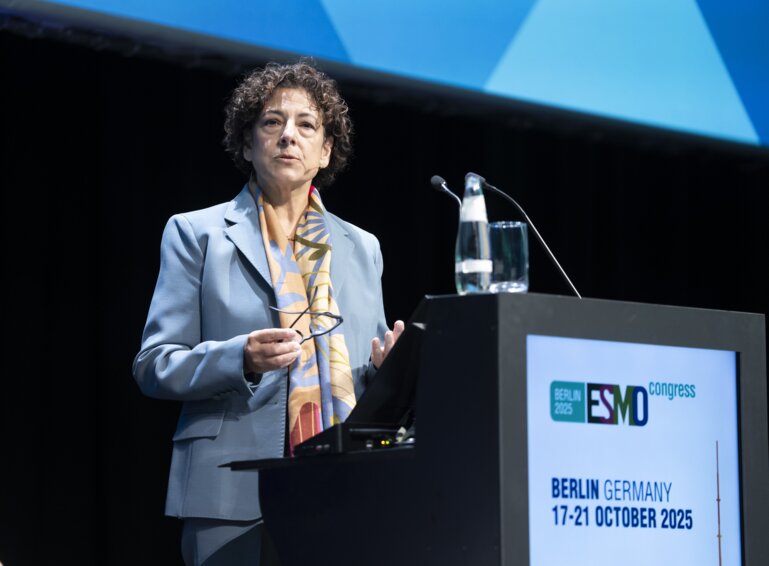Experience in breast cancer shows that treatment de-intensification must follow robust evidence, but also values and preferences to generate acceptance
In the field of breast cancer, de-escalated treatment strategies for women with a favourable prognosis have begun to enter routine practice as research continues apace. However, approaches to reducing exposure to the toxicities of anticancer therapies while maintaining equivalent efficacy of treatment can be met with reticence when patients harbour the impression that their outcomes could be compromised in the process. The fear of disease recurrence has also been reported by patients as a major barrier to participating in clinical trials of de-intensified regimens (Cancer Med. 2021 May;10(10):3288-3298), indicating a need for reassurance about the strength of the evidence underpinning their prognosis. Some argue that shared decision-making is an imperative in a setting where some scientific uncertainty is inevitable, and only patients ultimately know what trade-offs they are willing to make.
“Oncologists have known for a long time that treatments we give our patients do not help everyone, and we are well-versed in talking to them about estimates of the risk reduction they can expect from particular medicines based on the average risk of a given population,” says Prof. Ann Partridge, Vice Chair for Medical Oncology at the Dana Farber Cancer Institute in Boston, USA. “For example, we have historically given adjuvant chemotherapy to many early breast cancer patients knowing that the majority would have been cured by their surgery and hormone therapy alone, and that some of them will eventually relapse despite receiving the treatment. Only a modest absolute percentage actually benefit from it.” In this context, Partridge has observed that patients are often willing to undergo therapy for a slim chance of benefit, with implications for how this may now impact their perceptions of treatment de-intensification.
Redefining the risk-benefit ratio
As treatments like endocrine therapy for hormone receptor-positive disease have increased cure rates and validated genomic tests have provided oncologists with a better understanding of patients’ individual risk of recurrence, focus has shifted towards helping patients and survivors achieve a quality of life as close as possible to what it was before their diagnosis. However, in light of their documented readiness to assume additional risk of side-effects for a possibly life-saving medicine (Breast Cancer Res Treat. 2017;165:545-553), helping women understand their individual risk-benefit ratio with regard to chemotherapy may require making tangible the long-term consequences of its toxicity. For example, a marginal predicted benefit of therapy may render unacceptable the impact on overall life expectancy of rare but serious events like cardiovascular disease (Nat Rev Clin Oncol. 2016;13:172-184) and leukaemia (J Clin Oncol. 2015 February 1;33(4):340-348).
Dr. Maria Alice Franzoi, Gustave Roussy Cancer Campus, France, reports from experience that patients focused on curative treatment may also underestimate or not be aware of the impact of less severe, but common and potentially chronic side-effects of chemotherapy on their quality of life. “Discovering late adverse effects like cognitive dysfunction or persistent chronic side-effects such as neuropathy can be very frustrating for patients, with some telling us that if they had known how burdensome these would be, they would have had a different perspective on the treatment or could have better prepared to face its sequelae,” says Franzoi, advocating that physicians discuss with patients all potential long-term risks in addition to the acute side-effects of therapy when proposing a de-intensification they believe to be safe. For this purpose, she recommends counselling patients about their absolute risks and, if possible, using visual representations that allow them to compare what they stand to gain and lose from a treatment strategy and help them to understand its goals.
Although de-intensification is rarely considered in the youngest patients, who are less likely than their older counterparts to accept trade-offs between survival and quality of life, Partridge insists that age alone should not be a reason to exclude women under 40 from clinical trials if all the other evidence suggests they could derive a benefit. “Ultimately, they are the ones who have the longest time to live with the potential damage from their treatment,” she says, hoping among other things that young patients with low-risk, hormone receptor-positive disease will eventually be able to avoid adjuvant chemotherapy, too. Pending the results of the POSITIVE trial, the possibility to interrupt hormonal therapy to have a baby and breastfeed before going on to complete the course of treatment would be another important achievement for survivors who have their life ahead of them.
When the data in support of de-intensified regimens comes from studies providing lower levels of evidence, the limitations of our current knowledge should be clearly communicated to patients if such strategies are proposed.
Patient-centric de-escalation
Partridge is confident that when assured that their disease outcomes remain central to their treatment plan, many patients do welcome the opportunity to receive less intensive therapy—something she sees confirmed by the rapid accrual of the CompassHER2-pCR trial attempting to use pathological complete response to neoadjuvant treatment as a trigger to de-escalate adjuvant therapy for women with HER2-positive localised breast cancer. “The women whose tumours have disappeared at surgery after neoadjuvant anti-HER2-based chemotherapy continue on the trial with HER2-targeted therapy alone, while those without a complete response additionally receive standard multiagent chemotherapy, with all receiving hormone therapy as appropriate. Patients and doctors liked the study design so much that we have actually increased the sample size,” she reports, underlining that the idea of tailoring care to the individual’s disease and prognosis is perceived more positively by patients than the one-sided omission of treatment implied by the term “de-escalation”.
Recognising that this term is often equated with sub-standard care, Franzoi, recommends using more patient-centric language such as “personalising”, “tailoring” or “modulating” treatment to clarify the intent of the strategy: to provide the best balance between optimal disease control and minimal risk of harm and burden on the basis of specific patient and tumour characteristics.
Franzoi also stresses that doctors must be open about the uncertainty intrinsic to such approaches and engage patients in shared decision-making. “There are cases, such as hormone receptor-positive, node-negative early breast cancer in post-menopausal women with an intermediate recurrence score according to genomic signatures, in which we are confident that omitting chemotherapy is safe based on results of a large randomised controlled non-inferiority trial (N Engl J Med. 2018 July 12;379:111-121). But when the data in support of de-intensified regimens comes from studies providing lower levels of evidence, the limitations of our current knowledge should be clearly communicated to patients if such strategies are proposed,” she says. Having observed in clinical practice that some people focus on reducing toxicity and burden while others are more concerned about not compromising disease outcomes, Franzoi emphasises that treatment choices should be guided by medical and scientific rationale but ultimately align with each person’s individual values and priorities.







